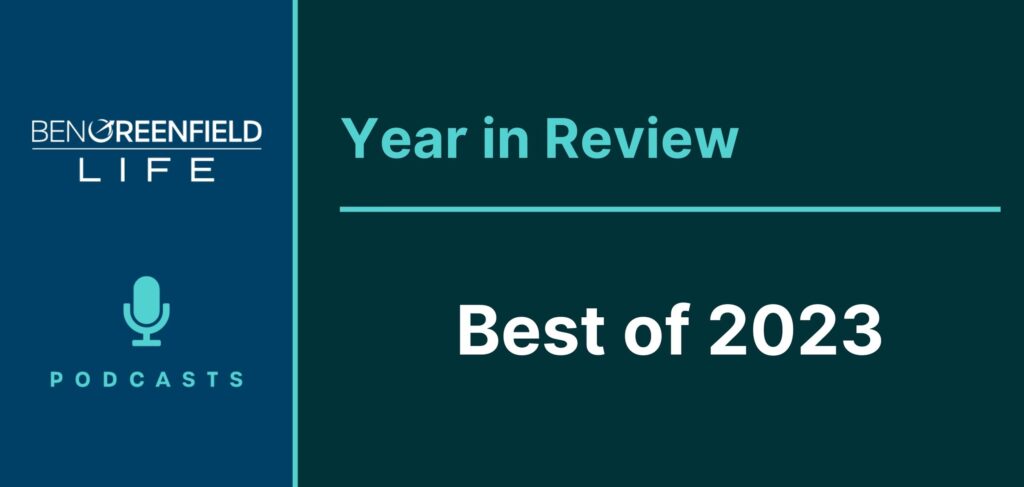November 26, 2019
Say goodbye to the days of sitting in a doctor's office waiting room, reading an out-of-date People magazine, waiting well past your appointment time for a sit-down with your doctor so they can ask you each of your symptoms, review your medical history, send you to a lab to wait in line for bloodwork, and, if you’re lucky, contact you days later with a general interpretation of your results.
Thanks to technology and the exciting digital data age, you now have access to limitless information, healthcare, and solutions at your fingertips.
Equipped with the innate capability of using intuition and self-awareness to warrant physiological self-evaluation, you now have more power than ever to control your own personal health journey. Within seconds, you can search and order at-home test kits—whether it be genetics, blood chemistries, or microbiome—and learn and prescribe your own interventions, as fast as same-day delivery.
It was just announced that the U.S. Department of Agriculture recently invested $42.5 million in telemedicine initiatives in order to make it easier for thousands of rural residents to get the healthcare they need, as well as take advantage of educational opportunities, without having to travel long distances. Even though the face to face interaction with a medical doctor is slowly becoming a thing of the past, you don't have to miss out on the highest quality, research-backed interpretations, and recommendations.
Two technologies, artificial intelligence and machine learning (ML), are making it easier than ever to manage your health—from the comfort of your home.
So What is Machine Learning and Artificial Intelligence?
ML is perhaps the most exciting specialty in computer science this decade, and not just because of its salary potential, but because its breadth spans far beyond the tech industry.
Just like you learn from your life experiences and apply the lessons to situations you’ve never encountered, ML enables computers to recognize patterns and solve problems on a large scale, and with unprecedented accuracy, without ever being programmed to solve those particular problems.
It’s a scientific field that uses analytical methods and data processing techniques pre-set and defined by humans to allow machines (computers) to learn and make intelligent decisions for a particular task—continuously. This field uses statistics and probability theories as to the foundation for its algorithms. Since learning is an essential process of intelligence, the subfield of ML ultimately falls under the umbrella classification of artificial intelligence (AI).
A machine can process an exorbitant amount of data exponentially faster than any human, doctor, or team of researchers.
For ML to work, a question or theory that needs answering must drive the learning. Common examples of ML that most of us are familiar with are image and voice recognition. In the e-commerce world, one of the questions that continuously gets asked is whether computers can help a consumer make smarter buying decisions without typing anything. Take the CamFind app, for example. Its technology enables an advanced level of mobile commerce. CamFind uses pictures taken by your mobile phone to identify objects like watches, shoes, bags, sunglasses, etc. and returns purchasing options to you. PlantSnap, an app I use regularly to help identify plants while foraging, works by using its own proprietary artificial intelligence to compare closeup photos of the leaves or flowers of a plant to other flora in its database. The Plantsnap database currently contains over 625,000 plants, trees, mushrooms and more, and the algorithm is now 94% accurate. Because it uses AI, the more people use it, the smarter it gets.
Another example is Amazon and the smart technology of the Alexa voice device. The question here is, how can an at-home computer optimize simple home services? Alexa uses voice recognition to perform a variety of home services, from turning off lights to playing your Spotify playlist. Every time Alexa makes a mistake in interpreting your request successfully, the data are used to make the system better and smarter the next time. It’s a simple, but progressively smarter feedback loop. The more data the machine has, the better and smarter it becomes in executing the task it has been programmed to do.
While Alexa makes for a great example of ML, I'm not about to start blasting Bluetooth through my home just so a robot can turn my lights off for me. In my opinion, a “smart home” is not nearly as desirable as a healthy home (more on that on this podcast).
Behavioral pattern recognition through ML is used throughout the automotive industry. Smart cars now incorporate learned traits and analyze the user’s personality, thereby creating user-specific profiles that can be leveraged to provide personalization and assistance to each driver. Think seat settings, parking assistance, even speaker volume, or temperature settings. Data acquisition and ML have also been installed in planning and execution of predictive car maintenance—do you brake hard, accelerate fast, or drift around corners? With constant feedback metrics and 360-degree 3-D sensors, cars are self-driving, self-parking and calculating every route on the road.
With machines doing everything for us nowadays, it may seem inevitable that humans beings may be destined to a future of stupidity and self-reliance, but the outlook isn't all doom and gloom. Jim Taylor, Ph.D. states in “How Technology Is Changing the Way Children Think and Focus” that…
“Research shows that, for example, video games and other screen media improve visual-spatial capabilities, increase attentional ability, reaction times, and the capacity to identify details among clutter. Also, rather than making children stupid, it may just be making them different. For example, the ubiquitous use of Internet search engines is causing children to become less adept at remembering things and more skilled at remembering where to find things. Given the ease with which information can be found these days, it only stands to reason that knowing where to look is becoming more important for children than actually knowing something. Not having to retain information in our brain may allow it to engage in more “higher-order” processing such as contemplation, critical thinking, and problem-solving.”
Machine learning is also all over your social media platforms through digital advertisements. Have you signed up for an Ironman race, left a review for a restaurant, or attended an event in your city? GPS tracking combined with your demographics, home address, Google search histories, and more create profile trends and behavioral patterns, and facilitate targeted advertisements relevant to you.
How is Machine Learning Creating the Field Of Health Intelligence?
In the medical space, ML has been used to tailor more precise and personalized diagnostics and treatment strategies.
The increasing amount of data acquisition and storage capability, as well as the continually improving computing capacity of machines, have allowed ML to be applied in the medical space successfully.
ML in the medical space is trying to intelligently answer two key questions:
- How can patient data be combined and processed to identify disease faster and more accurately?
- How can drug properties (e.g., absorption, metabolism, toxicity, etc.) be predicted more accurately and/or combined in a meaningful way so that they can be repurposed?
A recent editorial report in Nature Materials states that “Using ML in these contexts [medical space] relies on the collection and analysis of large quantities of data. Statistical bioinformatics has proven very useful in proteomic and genomic data analysis, and the adoption of ML to build predictors and classifiers has shown significant potential.” In this case, bioinformatics not only characterizes genomic and proteomic sequences but also uses the gene and protein information to predict and pattern health. This allows for the capability of 3-D mapping and tracking of one’s health based on their metabolic profile.
In genomics, being able to decode the entire DNA of an organism has become a common and cost-effective practice in the research and medical world. The ability to accurately read every base pair of a person’s genome, link these data to research-backed publications, and understand what traits we carry and how these traits translate to our current phenotype provides massive amounts of data.
ML organizes and process the overwhelming volume of data, predicts patterns, and provides a truly personalized profile, and pairs the findings with scientifically-validated and medically-approved actionable recommendations. In this field, naturally, the question begs: how can we leverage these huge DNA sequencing data sets, process them with the technological and scientific advantages of ML, and make smarter decisions for our health and wellbeing?
In the genomics space, DNA is already being used to help you make personalized decisions. DNA reporting companies on the market like Promethease or FoundMyFitness are looking at big human DNA data sets. Some of those companies are singling out specific SNPs (or single nucleotide polymorphisms) that have been associated with a certain trait. While it is interesting to know where you may have innate advantages, like your fast-twitching fibers or the ability to clear lactate better than others, genetics is only one piece of the human physiology puzzle. Just because you’re predisposed to having a metabolism that supports strength training, and even if your genetic combination is relatively rare in the gene pool, that doesn’t mean your genotype potential matches your phenotype—or your observable characteristics. A great example is with Vitamin D. GWAS or genome-wide association studies have identified a few variants relating to vitamin D levels, which should be noted in those who have these variants, but that doesn’t mean one can’t achieve optimal levels with proper food, supplementation, and sun exposure. You can listen to the following podcast to learn more about genetic testing and how it can be used to take your health to the next level:
- The Real Truth About Genetic Testing, Why 23AndMe Is Not Enough (& The Most Advanced Genetic Test You Should Get Instead For Customizing Your Exercise, Your Diet, Your Supplements & More!).
- High Protein Breakfast Myths, Genetic Testing For Exercise, Demystifying Brain Waves & More!
- How To Use Genetic Testing To Personalize Your Workout And Diet.
- How To Decode Your Genome, Unlock The Nitty-Gritty Details Behind Your DNA, Discover Your Good Genes, Your Bad Genes & More.
Human DNA is complex, influenced by our environment, diet, lifestyle, and needs to be considered in the context of phenotype, bloodwork, dietary intake, and lifestyle data. Think about the DNA as the music sheet and the nutrition/environment/lifestyle as the various instruments played by different musicians in a concert. You are the conductor and the performed music your phenotype. As you already know, music is made by not just reading the music sheet but also interpreting it at various levels and expressions.
This is where the Health Intelligence (HI) comes into play. HI can help you process all that info and suggest ways that you can read your music score and play it in your own unique way to achieve optimal health and wellbeing.
Next-Generation DNA Sequencing
DNA is big data. The human genome is three billion base pairs. Written out, three billion letters would fit on one million pieces of paper or 200 phonebooks. Remember back to middle-school biology. DNA is a long two-chain molecule made from repeating units of nucleotides that coil around to make the double helix. The sequencing of the DNA involves many techniques designed to read parts or the entire sequence of the DNA.
Next-generation DNA sequencing is a process that reads the entire DNA by sequencing multiple DNA fragments at once in a massive, parallel, automated process.
While human DNA has over 3 billion nucleotides, the human gut microbiome (i.e., the collection of all microorganisms found within the human gut) hosts over 100 trillion bacterial cells, producing more than 6GB of data for each sequencing.
If the human genome is big data, the gut microbiome can be considered huge data.
Among the first to analyze the gut microbiome, Onegevity—a company I first told you about on the podcast “How To Get 6 Gigabytes Of Data From Your Gut: The Fascinating Future Of Stool, Blood, Saliva & Urine Testing (From The Comfort Of Your Own Home)“, then again more recently on “What Your Gut Can Tell You About Exercise, Diet & Longevity (& The Best Way To Test)“—is the first to do it using the most advanced technology and with unprecedented depth and quality. Other companies on the market are using what is known as 16s sequencing. With 16s sequencing, only a certain portion of the bacterial DNA is sequenced and used as a method to identify and quantify bacterial species. However, this method cannot detect non-bacterial microorganisms and can't always differentiate beyond the species taxonomy level.
Onegevity uses the latest and more advanced whole-genome shotgun sequencing method. Shotgun sequencing can identify and measure every microorganism in a stool sample—including parasites, fungi, archaea, yeast, viruses, and bacteria—down to the strain level. This is utterly important because the E. Coli 0157 strain is dangerously pathogenic, but other strains of E. Coli are not known to be detrimental to human health. The level of depth and granularity allows Onegevity to precisely characterize and quantify your entire microbial composition and accurately discover more sources of gut inflammation—not limited to bacterial species—as well as suggesting more appropriate pro- and prebiotics and diet choices.

Why is the human gut microbiome considered huge data?
The human gut microbiome is comprised of many microorganisms, including bacterial species, which are the vast majority, but also eukaryotes, archaea, fungi, and viruses. Under normal conditions, these microorganisms help to maintain healthy digestion, optimal energy levels, a strong immune system, and a positive disposition. Disturbance of the flora from the environment, medications, foods, exercise, or exposure to illness can result in the gamut of symptoms: pain, discomfort, disease, indigestion, malabsorption of nutrients, compromised immunity, and overall loss of health and wellbeing. Tens of trillions of gut bacteria and how they impact symptoms results in exponential data outputs, which makes a perfect data set for a machine to crunch.
So How Does Onegevity Decipher Huge Data?
Onegevity is a Health Intelligence platform. Unlike other companies, they utilize the personal information you provide: both subjective information about your history and current habits along with objective physiological metrics to make their personalized recommendations for supplements and diet. It can synthesize the complex, next-generation sequencing of human DNA profiling from your tests and integrate it to blood results and personal, self-reported data.
Where other companies may focus on specific SNPs or physiological metrics results from one piece of the human physiological puzzle (i.e. blood, or dietary intake, or genetics), Onegeviy has the capability of looking at everything.
The Onegevity Health Intelligence platform processes and organizes data from multiple sources and employes big data analytics and cutting-edge ML techniques to assign your results biological meaning. Onegevity takes the huge data from your gut community and assimilates it with your lifestyle habits, environment, and nutrition to help you to understand what’s going on in your gut and how it is affecting your health.
Gutbio by Onegevity is the first at-home test kit that sequences the entire population of microorganisms in your gut. Through whole-genome sequencing, Gutbio reads the entire DNA code of all the species that occupy your gut.
Reports provide accurate insights and personalized recommendations to enhance your health and wellbeing—based on your goals. You can watch an overview of my Onegevity report below.
What’s unique about Gutbio is the amount of data integrated for you to visualize. Onegevity uses a combination of gut microorganism DNA, your genotype and phenotype, and metabolic chemistries to produce your report—which helps you understand the status of your health and how you compare to others like you, may it be athletic capabilities, age, gender, motivation level, or other. Your personalized recommendations for diet and supplementation are designed for you and your goals from the ML and probability feedback from thousands of others, both similar and different to you.
Soon, Onegevity will be launching Performbio™—the first at-home test kit to integrate the massive data from your gut microbiome with your blood and saliva metrics analyzing hormones, vitamins, and inflammation—to help you visualize the complex and dynamic processes affecting your whole body. The Health Intelligence platform will account for your self-reported feedback, too- how you sleep, the impact of your diet, mood, and mental performance drive. Performbio is vital for the ultimate high-performer, biohacker, and professional athlete, or athletic professional looking to use next-generation sequencing for next-generation performance.
Summary
Sequencing your entire community of microbes in the gut with the most advanced next-generation DNA sequencing methods (i.e., shotgun metagenomics) allows the Onegevity Health Intelligence platform to process these big data fast and at low cost, providing you invaluable insights on what is present and in which abundances and ratios.
Find out how diverse and healthy your gut is, what is contributing to your inflammation, which diet plan can improve your healthy gut flora, and what dietary supplements are right for your unique gut composition.
ML proprietary algorithms are also employed to give you predictions on unique gut metabolite levels for your microbiome’s capability of producing B vitamins, short-chain fatty acids, and lactate. Just as with your social media channel or Amazon’s Alexa, the more you and others input into the Onegevity Health Intelligence platform, the smarter and more precise the system becomes. Your data is being used to reinvent you and make you the best recommendations possible.
Ready to get started? Click here and use code: BEN20 to save $20 on a Gutbio test and easy-to-read report.
In the meantime, if you have questions, comments or feedback about what you've discovered in this article, leave them below and I'll reply! In addition, for more information on specific conditions, visit the Onegevity Journal, and follow Onegevity on Facebook and Instagram for education and their expanding webinar series.














I’ve heard that microbiome test is a great solution in such cases. You may be sent a detailed analysis that will show which products will have a positive impact on your health. I passed a similar test on the site https://atlasbiomed.com/ which showed about my small bowel problems. After that my nutritionist made a clear plan for me
Is there any rely gut testing for europe user?
Hi Ben! Fascinating article. Have you ever enrolled in Singularity University’s Foundation of Exponential Thinking online course? Thank you for providing a lot of insight into the applications of using AI and Ml in anaylzing your body’s data.
Such an interesting article, Ben. Great work!
On a side note, I have a small question regarding an injury I recently got: I dislocated my pinky (yes, I know) after falling. Now, this makes things in the gym a little harder in terms of grip and not being able to do a lot of exercices, so I want to bounce back ASAP! What main tips do you have for my muscles and tissues in my pinky to recover as fast as possible?
Thanks Ben! Great article!! Also, his may be a dumb question haha, but do you still pay for a lot of health insurance? Even though you have all these options available to you to biohack yourself?
How does the ongevity test differ from viome? If I’ve done a viome test is it worth doing my next annual test using ongevity or keep consistent with viome?
Michael, I encourage you to download a breakdown of Onegevity’s report on their website. I’ve done both and prefer the data and information laid out in the Gutbio report.
They discuss the difference in the podcast. Onegevity sounds superior to Viome. And it’s more expensive I believe.